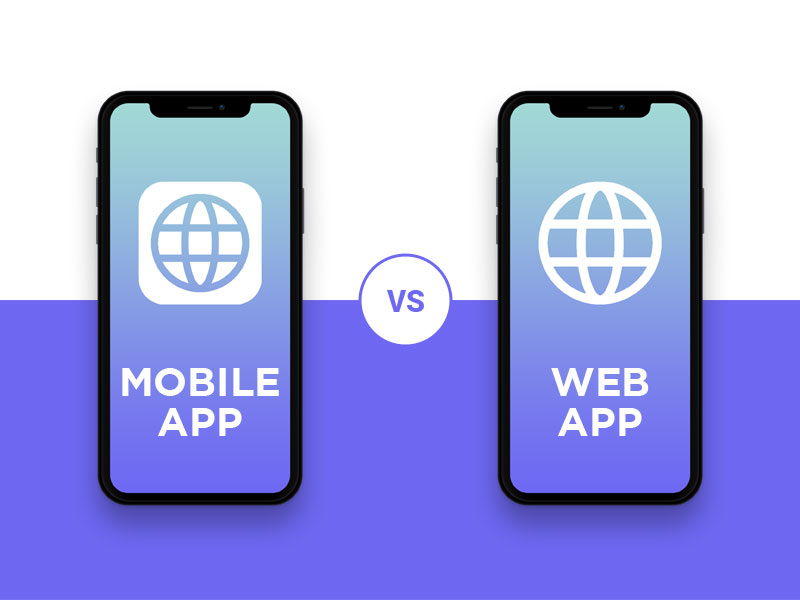A web application is a software application that runs in a web browser. It lets you do a task you would otherwise have to do on your computer from your phone, tablet, or remote device. It can usually be accessed through a URL, login, and password.
A web application is mostly user-interface, but it’s often made up of several pieces of software that are not necessarily available to users.
Out of which, design is the first thing that users observe when they open your web application. Hence, it is considered one of the most crucial parts of web application development.
Whenever you plan to develop a web application, you should give utmost importance to the web application design.
However, designing a web application that works well can be a very challenging task. You can save yourself and your team many headaches by planning, but that in itself still presents you with several significant design challenges.
Here we will walk you through some of the crucial web application design challenges of a designer.
Common Web Application Design Challenges Faced by Every Designer
Here is the list of web application design challenges of a designer:
1. Goal Planning
If you want to design a successful web app, you need to start by figuring out what you want it to do. By doing this from the beginning, you can keep yourself & your team stay on track and make sense of the work you’re doing.
Making a goal will set realistic expectations with the users and deliver value in a much efficient way. Rather than just building something and then trying to figure out what it should do.
2. Designing a good UX
In a nutshell, UX is all about the feelings that people experience when they use an interface. But more specifically, UX encompasses all of the reactions, perceptions, and feelings that users have while interacting with an application. It’s also commonly referred to as User Experience Design.
User experience (UX) is one of the most important aspects of a good website or app. UX is more about the pleasure of using your product than anything else. Good UX design elevates your product allowing users to consume content.
3. Visual Content
Design trends for the web change year-on-year. A designer can’t just follow one principle to design anything. They have to constantly learn new things and implement them in web application design.
Here are some of the basic things:
- Focus on the whitespace
- Integrate rich animation
- The text should be less and to-the-point
- Follow latest typography trends
4. UI design of the application
The User Interface (UI) is the way users face their applications. In other words, UI consists of all the visual elements of an application.
UI design focuses on building apps that are clear & engaging to use and ensure a positive user experience.
On the contrary, UI is all about, making it easy for users to get things done at every stage of the user journey. Good UI design is critical to your users to get a constructive experience and urge them to visit the application more often.
5. Performance of the Application
Speed is a critical factor in the success of any web application and arguably one of the most essential performance metrics.
If it takes more than six seconds for your website to feel interactive for your users, they will likely leave before they even get a chance to engage it.
6. Security
Being a designer, you need to make sure the web application should be well-maintained, secure, and can withstand security threats in the future. With the right security strategies, you will be able to protect your application against any potential attacks.
To effectively secure your application, you will need a strong understanding of web security threats and how they can be used to break into your application. One of the most common ways hackers gain access to web applications is through brute force attacks.
7. Engagement factor
Engagement is a major part of the success of a Web Application. You may have noticed more than often that visitors will browse through your content and leave without any conversions. This loss of traffic could be through poor conversion or even worse – you never knew they were there at all.
To improve the engagement level in a web application, there must be an existing customer base of customers visiting the site. Improving customer engagement requires some pre-existing traffic or customer base on the web app.
8. Compatibility with Browsers
Browser compatibility is not just limited to the different versions of web browsers but also to the different operating systems too. The web application developed must be compatible with all operating systems, or else there will be a large percentage of users who will reject your site to that extent.
9. Navigation
Navigation can be one of the most critical facets of any web application. Users go to a web app for the content, but they stick around for the navigation. A web app’s navigation must be effective and intuitive.
Navigation that works well will help users find and access your web app content quickly. This will improve usability and improve the overall user experience.
10. Screen Resolutions for every device
Very few users will always access your web app on a desktop device, but most of them will be using mobile devices, and they want convenience. To provide such convenience, you need to have an appropriate web app design that caters to all your end-users needs.
Conclusion
Developing a web application is a challenging job for designers as they have to deal with many constraints. They need to work on new platforms, design smooth navigation, and address various design problems. Designing web apps can give you a lot of experience especially if it is your first time doing it.
In conclusion, knowing the web app design challenges will help you a lot down the path. You can design an effective, scalable, and reliable web application without any hindrance.







